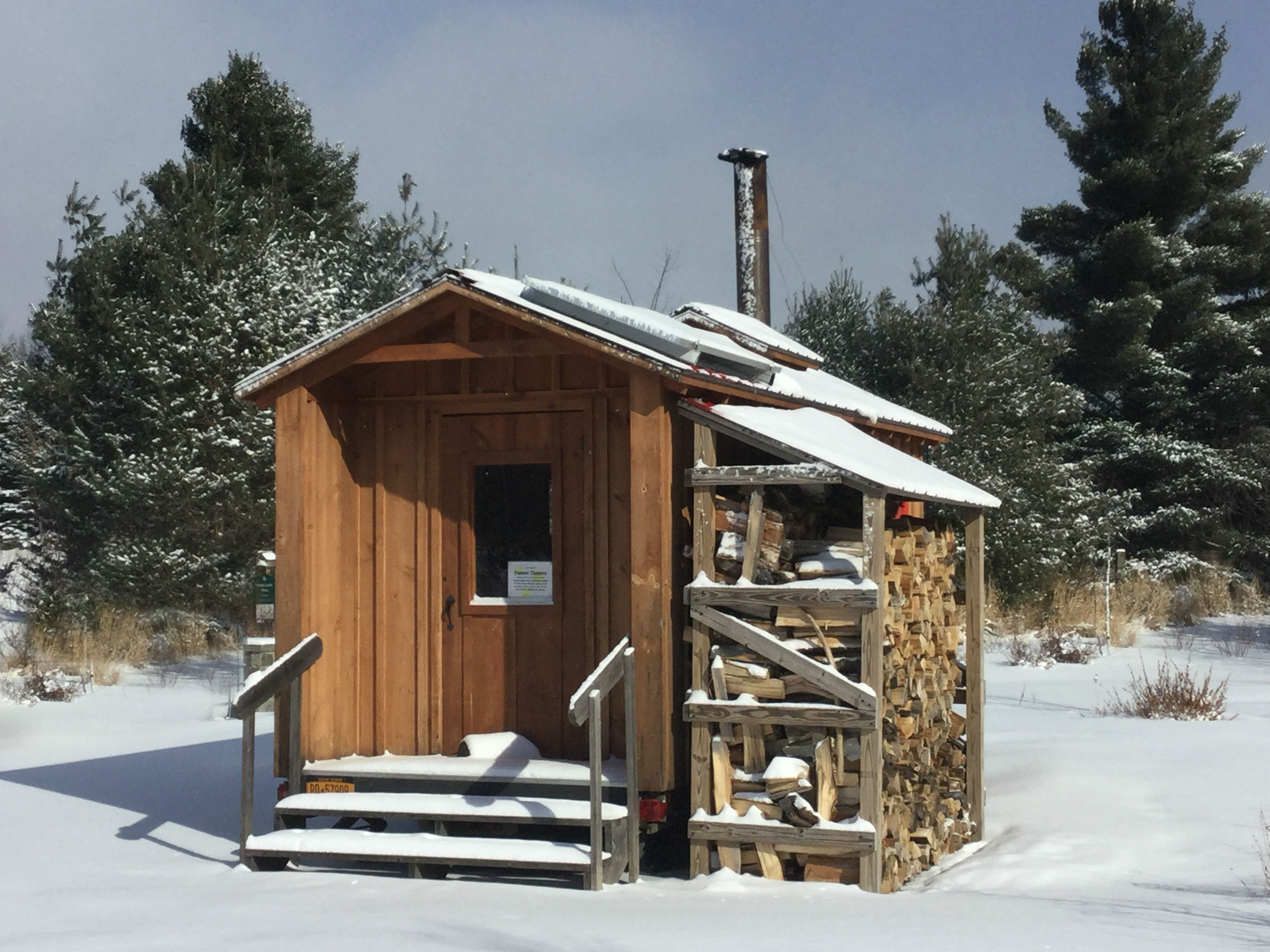
close enough to touch
Spring is a lively time at The Wild Center. From the season's beginning, with the sap rising in the maple trees, to the end, where wildflowers bloom and the lake completes its thaw, every little change is critical.
This cycle of the season is an important part of nature waking up from the sleep of winter.
Rising sap
During winter, the dormant maple trees store energy in long starch molecules. When nights are cold but short and days are long and warm, the tree reacts to the approach of spring by turning that starch into shorter, and more abundant, sugar molecules.
Which is how we get our maple sap. When it is boiled down in the sugar shack (as seen above) it becomes maple syrup for pancakes. To name just one treat that gets better with maple syrup.
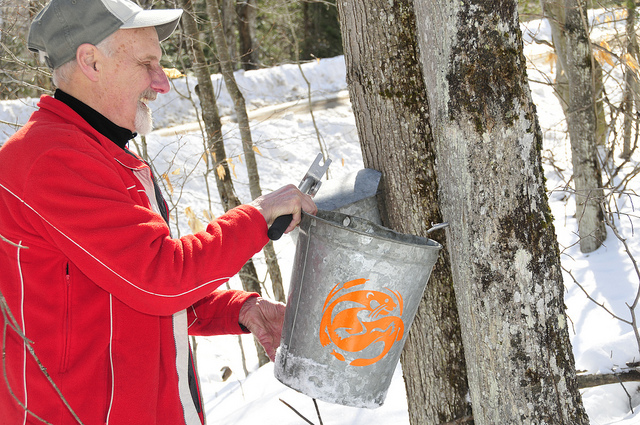
I interviewed The Wild Center's maple person, Shannon, about the upcoming maple celebrations.
I've been involved with maple sugaring production for the past three years, this will be my fourth year involved with the project. It holds a special place in my heart, getting to work with all the community members each season, as well as building on my knowledge. Get to work outside all spring — can't beat that!
Before coming to the Wild Center I had heard about maple sugaring, but I'd never really dived into it. So I actually came here to work as a maple intern, my first winter. And that's where I got the experience, and then I stayed on, and took some more responsibilities the next season. Then last year I was managing and coordinating the program.
It's been a progression built from the ground up.
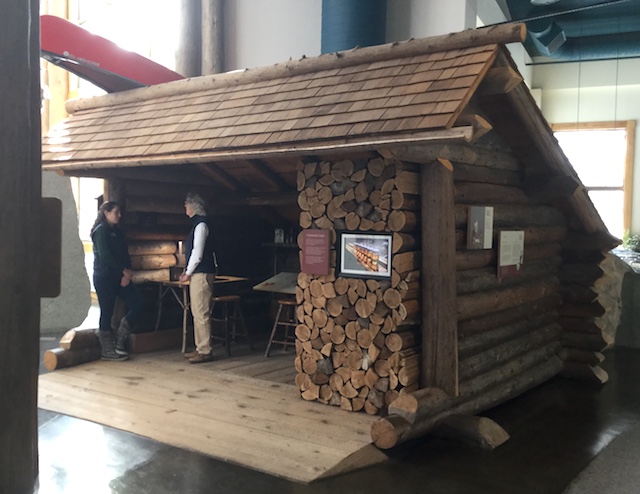
Maple sugaring was a major export from the Adirondacks for many years, when this was the only form of sugar available to most of the population. Other forms of sugar were far too expensive. Now Shannon helps visitors to the Wild Center experience this important part of Adirondack history, and an important part of a good lumberjack breakfast.
As Shannon explains:
When you come to the Wild Center for a maple event, it is part of the NYS Maple Weekends, a statewide initiative through the New York State Maple Association. Held the second and third weekends of March, our sugar shack will be running and open for tours and have a fresh taste of syrup, and a movie about it playing in our theater. The whole Wild Center adapts that theme for the month of March.
There will be two Pancake Breakfast events, on the Saturday mornings of the Maple Weekends, to start your day off right. These have been so popular in the past, that a couple of years ago we had over 300 people come to our pancake breakfast. There's a small charge for these events.
My favorite part is being in the sugar shack, so I encourage anyone who comes to the Wild Center during those two weekends to explore it, learn about our maple project, learn about how to make maple syrup in this area, and definitely come out and sample some syrup.
I heartily agree. The sweet scent rising on the warm air from the sugar shack is one of the delights of this season.
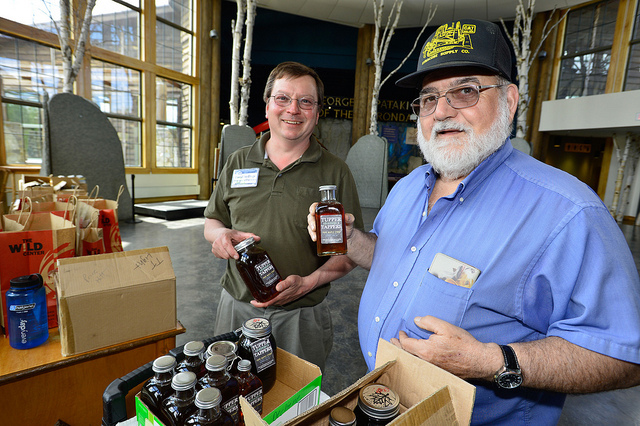
Read the whole maple story with the blog: Sap! For the love of mmmmmaple.
Nature that moves
The full-immersion fascination doesn't stop there. Visit the tank full of otters to see them above and below the water.
All of the in-depth displays and interactive features of this amazing natural history center will be open during the Maple Event.
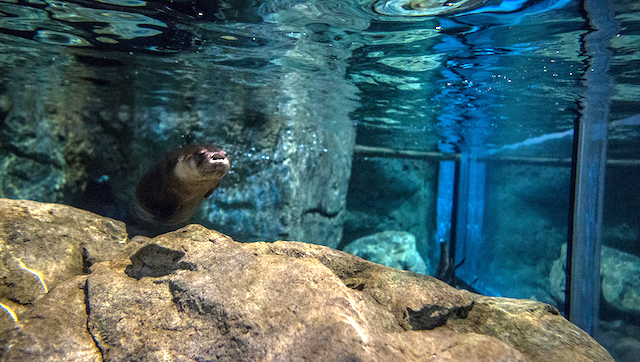
Throughout the day the theater will be running nature films and there will be periodic wildlife presentations. As seen below, Luna the screech owl was unable to be released back into the wild after an injury. So she now helps visitors learn about owls in a delightful presentation in the Great Hall.
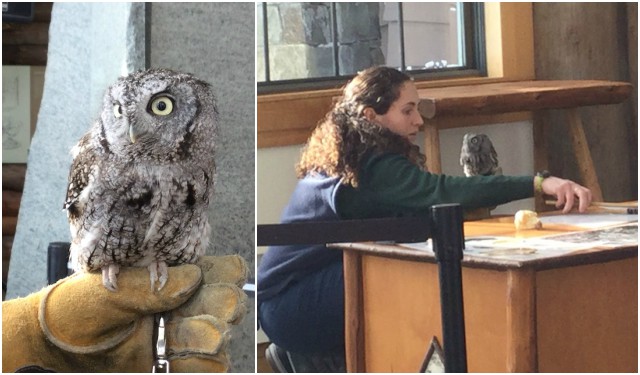
There's always something interesting going on, whether it is the live ducks and turtles in one of the fish ponds or the live carnivorous plants in the bog exhibit.
Learn more about how the otters are cared for behind the scenes with the blog: A Day in the Life of The Wild Center Otters.
Explore the outdoors
In the winter, snowshoes are included as part of the admission. There's an easy loop from one back door to the other, or venture off a bit and explore a nearby wood.
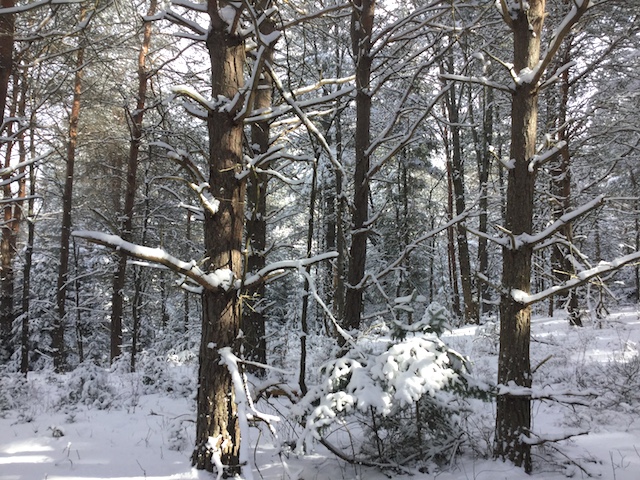
Trek over the beautiful bridge, over the frozen lake, and you'll find nature has a whole new look. Because The Wild Center lets us see what is under the surface.
And then, the surface we see is even more interesting.
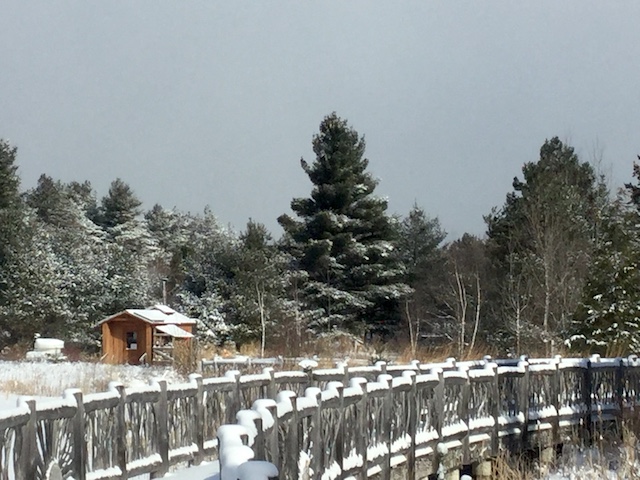
Relax into your choice of lodging. Find another hearty meal with our dining. If you fell in love with snowshoeing, find more trails.
